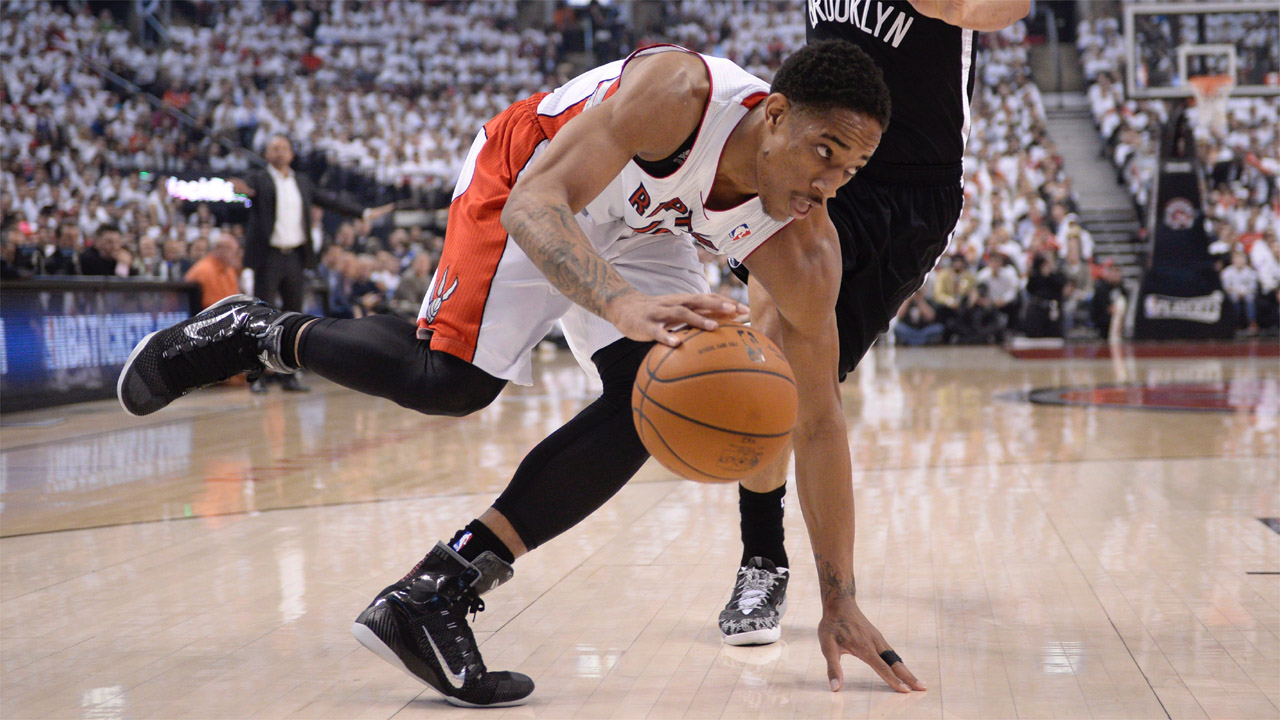Regularly throughout the NBA playoffs, we’ll be checking in with former Raptors head coach Butch Carter for an insider’s perspective on the X’s and O’s that lead to W’s and L’s. Today, Carter breaks down the areas of potential off-season improvement for the Raptors.
The only thing a coach can do to improve his team in the period of time between the end of their season and free agency is put together a summer plan that betters himself and his players. You have to head into the film room and watch all of the season’s ugly moments—the times you could have done a better job—and learn from them.
Dwane Casey did an outstanding job with this year’s Raptors in 99 percent of the areas a coach has to cover, but there’s always room for improvement. I think that one crucial area Casey has to address is end of game situations (EOG).
Under Casey, the Raptors have a 5-15 record in overtime games, and this past season alone, their record in those situations was 1-6. In order to help the team be more successful next year, Coach Casey and his staff will absolutely have to improve on that number.
The easiest way to build a portfolio to address late-game situations—good and bad—is to call the interns at NBA Films in New Jersey. They have tape of every game played in the last 30 years. You tell them exactly what you want—final plays for the win inbounding from the side out of bounds, for example—and then you can ask for specific coaches—Larry Brown, Don Nelson, Rick Carlisle, Gregg Popovich, whoever. You’re allowed to steal this stuff, copying is legal!
You’re trying to find plays tailored to a certain game situation, so instead of reaching for a play with six seconds left in a game, you’ll already have your six-second play prepared in advance. When I coached, my plays were categorized based on the time left on the clock—there was a specific play for 20 seconds, a different one for 15 seconds, and so on.
Casey spent time coaching under George Karl in Seattle, but when I look at his play calling, I see the most influence from the years he spent with Rick Carlisle in Dallas. On those Mavs teams, he worked under a coach who, in late game situations, threw the ball to a Hall of Famer with a unique skillset, Dirk Nowitzki, who would either shoot overtop of somebody or get fouled. On the Raptors, Casey is pulling a lot of the same plays from the Carlisle years, but without the same unique talent to execute them.
What you can see in the videos above are two former Carlisle assistants—Casey and Portland’s Terry Stotts—running very similar plays in the same late-game situation, albeit with different results.
In general, Casey also breaks one of my fundamental rules in EOG: You never want to put the game in the officials’ hands. The coach’s goal is to get his team a clean shot, and then it’s up to the players to make it. But you don’t want to run plays that rely on a player initiating contact or getting to the free-throw line, which is something I’ve seen from the Raptors this season.
Casey also has a tendency to oversimplify, which doesn’t work against the really good teams, because they have brilliant memories. In his press conference on Tuesday, Casey made a quick reference to the fact that, in the Brooklyn series, Kevin Garnett was calling out the Raptors’ plays before they even ran them. What they could have done instead is run what appeared to be the same play and, when the defence started to adjust, run a counter. The Raptors rarely, if ever, ran counters, and good teams pick up on that.
It’s one thing to consistently beat teams worse than yours, but as a coach your goal is to build a team that can compete and win against the great teams. When two little bears wrestle, it’s all fun—until a big bear shows up. And then you realize it’s not as easy anymore. You need to fight differently. The Raptors have gone 14-29 against Boston, Chicago, Indiana and Miami over the last three seasons. Those are the big bears. So heading into next year that’s one area where you can make a big impact.
The GM can help him, too, and a look back at my first year in Toronto illustrates that. In my first full year as head coach—the lockout-shortened season in 1998-99—we were 23-27. We needed some more pieces and we went out and got them. We traded for Antonio Davis and signed Charles Oakley to get tougher. We brought in Dell Curry because we needed shooting and we signed Muggsy Bogues to give us a really good backup who could convert his free throws at the end of the game.
Casey also plays an integral role in the development of his players. Right now the analytics will tell you that Jonas Valanciunas is not going to drive left—same for Terrence Ross. The analytics will tell you that DeMar DeRozan really struggles to defend strong wing players. Those are weaknesses that are really exposed in the course of a seven-game series, and it’s up to Casey to put a plan in place to address them.
He’s well suited to that, though, because what’s good about Casey with this particular group of guys is that he’s consistent in his message and in the way he treats his players. If you’ve been in bad locker rooms, you know that Casey has gotten that part 100 percent right. He’s a really good guy, and he’s developed a great relationship with his players—I’ve said that for a long time. If the Raptors’ improve their record against good teams, their record in overtime and clean up the way they manage the end of games, they could go out and win 55 games next year and keep building something.


